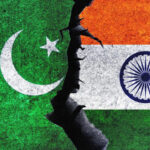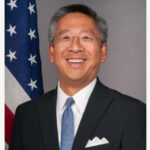What are the historical reasons why third party mediation is avoided by the government? Will the status quo on India’s Kashmir policy remain?
The story so far: On Monday, U.S. President Donald Trump claimed that Prime Minister Narendra Modi had sought mediation in Kashmir when they met during the G-20 summit in Osaka. In Parliament, External Affairs Minister S. Jaishankar categorically said that Mr. Modi did not request Mr. Trump to “mediate or arbitrate” on the Kashmir issue. He said India remains committed to discussing all issues with Pakistan bilaterally.
What is the backstory on the U.S. offer of mediation?
In 1993, the new administration of U.S. President Bill Clinton decided to wade into the Kashmir issue, indicating repeatedly that it wished to mediate between India and Pakistan. At the U.N. General Assembly in September, Mr. Clinton referred to resolving “civil wars from Angola to the Caucasus to Kashmir,” and a month later, the U.S. Assistant Secretary of State Robin Raphel questioned the validity of Kashmir’s ‘Instrument of Accession’ during a press briefing. At a recent event, the Union Minister for Housing and Urban Affairs, Civil Aviation (and Minister of State, Commerce and Industry), Hardeep Puri, recounted how India issued a strong protest. Mr. Puri was then the Joint Secretary (Americas), and made the call to an official in Washington with a carefully but strongly worded message cleared by Prime Minister P.V. Narasimha Rao. Mr. Puri said, “We read the riot act to the U.S. administration that time, and succeeded remarkably in drawing a red line on the issue [of mediation].”
In fact, until Mr. Trump dropped a bombshell during his joint press appearance with Pakistan Prime Minister Imran Khan on Monday, where he claimed that Mr. Modi had asked him to “mediate or arbitrate” on Kashmir, no U.S. leader has publicly crossed that line in 25 years. Responding to a swift and angry denial from the Ministry of External Affairs, the U.S. State Department seemed to backtrack from the allegation by saying that Kashmir remains a “bilateral issue”, but maintained that the U.S. “stands ready to assist” any India-Pakistan talks.
Why does India refrain from taking help?
India’s firm position against mediation on Kashmir or any other issue stems from several reasons, most notably a historical suspicion, since the 1950s and 1960s, as mediated talks by the United Nations and World Bank, the United States, the United Kingdom and Russia have been unsuccessful in resolving the issues between India and Pakistan. At best, the attempts have worked for diffusing tensions, or calling off hostilities at the Line of Control and the International Border, but not in terms of their rival claims over Jammu and Kashmir. Another reason is that India sees itself as a regional leader, and does not require any assistance in sorting out its issues with other regional countries. In addition, the widespread belief is that mediation favours the weaker party by levelling the playing field, and with its stronger conventional and non-conventional military prowess, India has seen no significant gain from bringing a third-party into its 70-year-old conflict with Pakistan.
When did the UN try to mediate?
The early attempts at mediation by the UN were made after India took its complaint against Pakistan’s forced occupation of parts of Kashmir (PoK) to the UN Security Council on January 1, 1948. The UN then set up the United Nations Commission for India and Pakistan (UNCIP) which proposed mediating a resolution along a three-point action plan: Pakistani demilitarisation of the Kashmir region, followed by Indian reduction in military presence, and a proposed final resolution by an impartial U.N. administered plebiscite to “determine the wishes of the Kashmiri people”. The deal never got off the ground as Pakistan never agreed to demilitarise, and India under Prime Minister Jawaharlal Nehru made it clear that a plebiscite would never be accepted. Where the UNCIP was successful was in mediating a ceasefire in 1949, and negotiating the geographical location of the cease-fire line which would be monitored by the United Nations Military Observer Group In India and Pakistan (UNMOGIP). Individual U.N. representatives continued to visit both sides from 1949 to 1953 but failed to improve the atmosphere for a resolution, or to convince either side to demilitarise the two sides of the LoC. The first United Nations Representative for India and Pakistan (UNRIP) appointed to mediate the dispute was Sir Owen Dixon, an Australian jurist, who was followed by Frank Graham, an American diplomat, who gave up after his proposal was rejected by New Delhi and Karachi (then the capital of Pakistan) in April, 1953. The only exceptions to this dismal record were the 1960 World Bank guaranteed Indus Water Treaty, and a territorial agreement on the Rann of Kutch, mediated successfully by the British government in 1965. Soviet Premier Kosygin also moderated between Prime Minister Lal Bahadur Shastri and Pakistani President Ayub Khan to broker the 1965 Tashkent peace agreement, but the treaty has always been marked by suspicion and doubts, tainted by Shastri’s sudden death at Tashkent.
What about the U.S.?
A particularly bitter episode for India came from mediation attempts by the U.S. and the U.K. after the 1962 Sino-Indian war. The U.S. had provided India with planes and military hardware worth about $60 million during the war, and the price, said American officials, was that India should agree to mediated talks with Pakistan on Kashmir.
Says Ashoka University Professor Rudra Chaudhuri (author of Forged in Crisis: India and the United States since 1947, and also the director of Carnegie India), “The mediation was accepted because Nehru was in shock after the defeat to China, and the U.S. made it clear that any further military assistance was contingent on India’s cooperation on Kashmir talks.”
On November 21, 1962, the day the war ended, a team of 24 American negotiators headed to India, led by U.S. Assistant Secretary of State Averell Harriman. They worked, along with U.S. Ambassador John Kenneth Galbraith and British High Commissioner Paul Gore-Booth to bring India to the table for six rounds of talks between Foreign Minister Swaran Singh and Pakistan Foreign Minister Zulfiqar Ali Bhutto. Eventually, however as India regained its confidence, the talks floundered, and ended in 1963 after Nehru made it clear that India would never give up the Kashmir Valley.
Will India remain opposed to mediation?
After winning the war with Pakistan that saw the creation of Bangladesh, India, in 1972, negotiated the Simla Agreement, which did away with any idea of future mediation between the two countries. According to the Agreement signed on July 2, 1972 by Indira Gandhi and by then President Bhutto, the two countries “resolved to settle their differences by peaceful means through bilateral negotiations or by any other peaceful means mutually agreed upon between them”.
In February 1999, the Lahore declaration signed by Nawaz Sharif and Atal Behari Vajpayee also affirmed the bilateral nature of issues and their resolution. Thus, even when Mr. Trump spoke this week, India’s response, in Parliament, was to invoke the Shimla Agreement and the Lahore Declaration saying that they “provide the basis to resolve all issues between India and Pakistan bilaterally”. These bilateral efforts are at an end at present, and little has moved since the last negotiations on Kashmir in 2003-2008, when Indian and Pakistani negotiators discussed the four-step formula.
India has maintained its opposition to third-party mediation, however, and despite offers from several leaders including South African President Nelson Mandela, UN Chief António Guterres, and more recently, the Norwegian Prime Minister, Erna Solberg, has said, “thanks, but no thanks”.
Why does India say no to Kashmir mediation?
What are the historical reasons why third party mediation is avoided by the government? Will the status quo on India’s Kashmir policy remain?
The story so far: On Monday, U.S. President Donald Trump claimed that Prime Minister Narendra Modi had sought mediation in Kashmir when they met during the G-20 summit in Osaka. In Parliament, External Affairs Minister S. Jaishankar categorically said that Mr. Modi did not request Mr. Trump to “mediate or arbitrate” on the Kashmir issue. He said India remains committed to discussing all issues with Pakistan bilaterally.
What is the backstory on the U.S. offer of mediation?
In 1993, the new administration of U.S. President Bill Clinton decided to wade into the Kashmir issue, indicating repeatedly that it wished to mediate between India and Pakistan. At the U.N. General Assembly in September, Mr. Clinton referred to resolving “civil wars from Angola to the Caucasus to Kashmir,” and a month later, the U.S. Assistant Secretary of State Robin Raphel questioned the validity of Kashmir’s ‘Instrument of Accession’ during a press briefing. At a recent event, the Union Minister for Housing and Urban Affairs, Civil Aviation (and Minister of State, Commerce and Industry), Hardeep Puri, recounted how India issued a strong protest. Mr. Puri was then the Joint Secretary (Americas), and made the call to an official in Washington with a carefully but strongly worded message cleared by Prime Minister P.V. Narasimha Rao. Mr. Puri said, “We read the riot act to the U.S. administration that time, and succeeded remarkably in drawing a red line on the issue [of mediation].”
In fact, until Mr. Trump dropped a bombshell during his joint press appearance with Pakistan Prime Minister Imran Khan on Monday, where he claimed that Mr. Modi had asked him to “mediate or arbitrate” on Kashmir, no U.S. leader has publicly crossed that line in 25 years. Responding to a swift and angry denial from the Ministry of External Affairs, the U.S. State Department seemed to backtrack from the allegation by saying that Kashmir remains a “bilateral issue”, but maintained that the U.S. “stands ready to assist” any India-Pakistan talks.
Why does India refrain from taking help?
India’s firm position against mediation on Kashmir or any other issue stems from several reasons, most notably a historical suspicion, since the 1950s and 1960s, as mediated talks by the United Nations and World Bank, the United States, the United Kingdom and Russia have been unsuccessful in resolving the issues between India and Pakistan. At best, the attempts have worked for diffusing tensions, or calling off hostilities at the Line of Control and the International Border, but not in terms of their rival claims over Jammu and Kashmir. Another reason is that India sees itself as a regional leader, and does not require any assistance in sorting out its issues with other regional countries. In addition, the widespread belief is that mediation favours the weaker party by levelling the playing field, and with its stronger conventional and non-conventional military prowess, India has seen no significant gain from bringing a third-party into its 70-year-old conflict with Pakistan.
When did the UN try to mediate?
The early attempts at mediation by the UN were made after India took its complaint against Pakistan’s forced occupation of parts of Kashmir (PoK) to the UN Security Council on January 1, 1948. The UN then set up the United Nations Commission for India and Pakistan (UNCIP) which proposed mediating a resolution along a three-point action plan: Pakistani demilitarisation of the Kashmir region, followed by Indian reduction in military presence, and a proposed final resolution by an impartial U.N. administered plebiscite to “determine the wishes of the Kashmiri people”. The deal never got off the ground as Pakistan never agreed to demilitarise, and India under Prime Minister Jawaharlal Nehru made it clear that a plebiscite would never be accepted. Where the UNCIP was successful was in mediating a ceasefire in 1949, and negotiating the geographical location of the cease-fire line which would be monitored by the United Nations Military Observer Group In India and Pakistan (UNMOGIP). Individual U.N. representatives continued to visit both sides from 1949 to 1953 but failed to improve the atmosphere for a resolution, or to convince either side to demilitarise the two sides of the LoC. The first United Nations Representative for India and Pakistan (UNRIP) appointed to mediate the dispute was Sir Owen Dixon, an Australian jurist, who was followed by Frank Graham, an American diplomat, who gave up after his proposal was rejected by New Delhi and Karachi (then the capital of Pakistan) in April, 1953. The only exceptions to this dismal record were the 1960 World Bank guaranteed Indus Water Treaty, and a territorial agreement on the Rann of Kutch, mediated successfully by the British government in 1965. Soviet Premier Kosygin also moderated between Prime Minister Lal Bahadur Shastri and Pakistani President Ayub Khan to broker the 1965 Tashkent peace agreement, but the treaty has always been marked by suspicion and doubts, tainted by Shastri’s sudden death at Tashkent.
What about the U.S.?
A particularly bitter episode for India came from mediation attempts by the U.S. and the U.K. after the 1962 Sino-Indian war. The U.S. had provided India with planes and military hardware worth about $60 million during the war, and the price, said American officials, was that India should agree to mediated talks with Pakistan on Kashmir.
Says Ashoka University Professor Rudra Chaudhuri (author of Forged in Crisis: India and the United States since 1947, and also the director of Carnegie India), “The mediation was accepted because Nehru was in shock after the defeat to China, and the U.S. made it clear that any further military assistance was contingent on India’s cooperation on Kashmir talks.”
On November 21, 1962, the day the war ended, a team of 24 American negotiators headed to India, led by U.S. Assistant Secretary of State Averell Harriman. They worked, along with U.S. Ambassador John Kenneth Galbraith and British High Commissioner Paul Gore-Booth to bring India to the table for six rounds of talks between Foreign Minister Swaran Singh and Pakistan Foreign Minister Zulfiqar Ali Bhutto. Eventually, however as India regained its confidence, the talks floundered, and ended in 1963 after Nehru made it clear that India would never give up the Kashmir Valley.
Will India remain opposed to mediation?
After winning the war with Pakistan that saw the creation of Bangladesh, India, in 1972, negotiated the Simla Agreement, which did away with any idea of future mediation between the two countries. According to the Agreement signed on July 2, 1972 by Indira Gandhi and by then President Bhutto, the two countries “resolved to settle their differences by peaceful means through bilateral negotiations or by any other peaceful means mutually agreed upon between them”.
In February 1999, the Lahore declaration signed by Nawaz Sharif and Atal Behari Vajpayee also affirmed the bilateral nature of issues and their resolution. Thus, even when Mr. Trump spoke this week, India’s response, in Parliament, was to invoke the Shimla Agreement and the Lahore Declaration saying that they “provide the basis to resolve all issues between India and Pakistan bilaterally”. These bilateral efforts are at an end at present, and little has moved since the last negotiations on Kashmir in 2003-2008, when Indian and Pakistani negotiators discussed the four-step formula.
India has maintained its opposition to third-party mediation, however, and despite offers from several leaders including South African President Nelson Mandela, UN Chief António Guterres, and more recently, the Norwegian Prime Minister, Erna Solberg, has said, “thanks, but no thanks”.






NO COMMENT